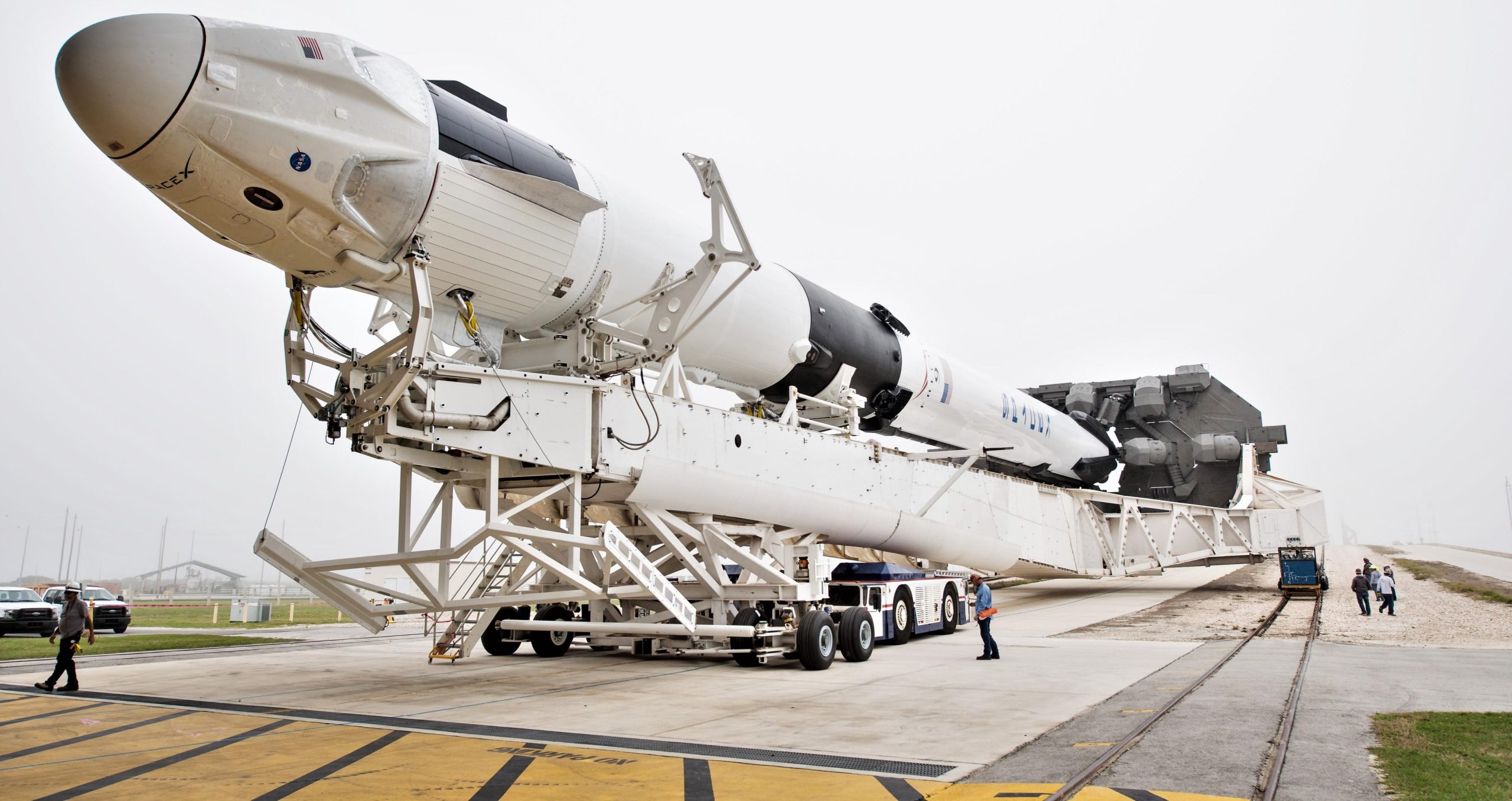
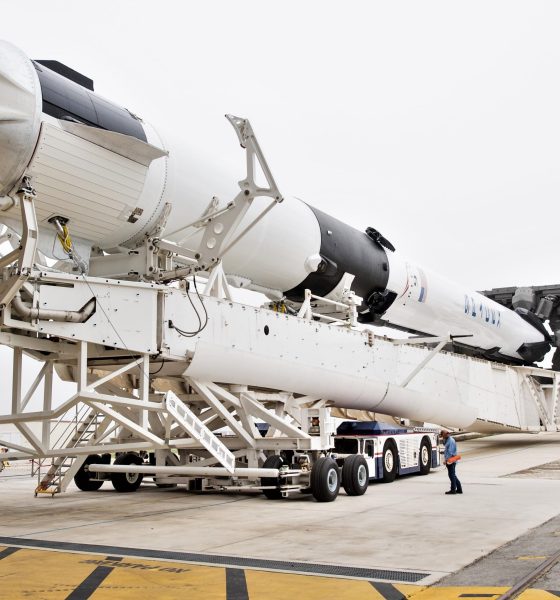
SpaceX
SpaceX’s crewed Dragon launch debut likely to slip into 2020 as NASA pursues “realistic” dates
In a recent blog post, NASA made it clear that changes happening to leadership within the agency – specifically within the Human Exploration and Operations Directorate – are impacting the timelines to return astronauts to the International Space Station(ISS) from US soil. Agency conflicts are just the latest of several setbacks that have impacted the schedule of SpaceX’s crewed Crew Dragon launch debut.
Initially, the SpaceX Demo-2 mission set to carry NASA astronauts Bob Behnken and Doug Hurley to the ISS was slated to occur in the summer of 2019. That demonstration flight has since dropped off of the NASA launches and landings schedule, at least through October. SpaceX is now targeting a Demo-2 launch no earlier than December 2019 but an array of critical milestones must be completed to achieve that goal and both SpaceX and NASA have been keen to express that a crewed Crew Dragon launch in 2019 is a huge stretch.
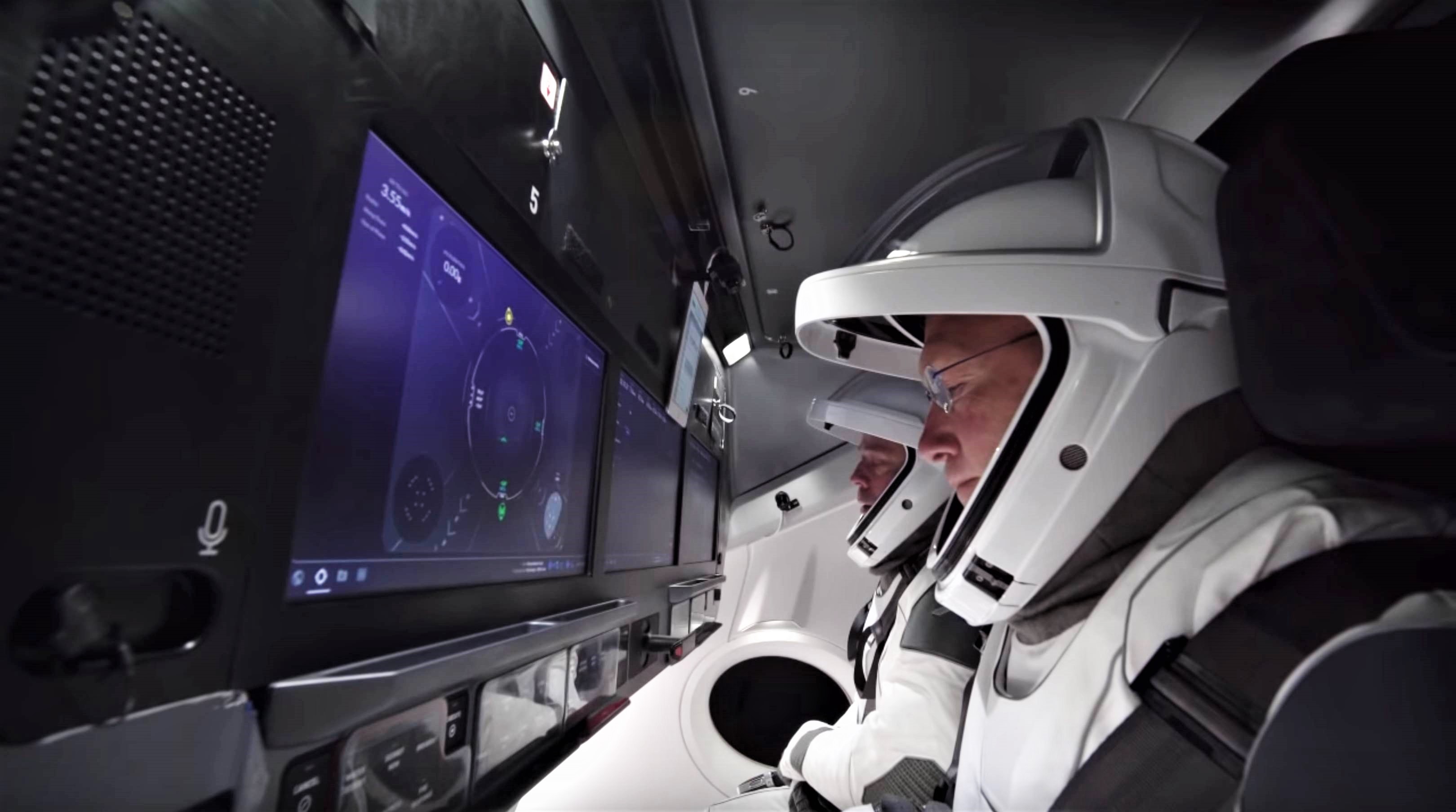
According to the recent blog post, “NASA Administrator (Jim Bridenstine) has directed all programs in the Human Exploration and Operations Directorate to reexamine flight dates once new leadership is in place to deliver realistic schedule plans.” It is very likely that these new schedule plans will push the Demo-2 launch target into 2020.
Another roadblock that affects the timeline is the fact that SpaceX has yet to conduct an in-flight abort (IFA) test of the Crew Dragon capsule, meant to demonstrate the ability of the capsule’s SuperDraco thruster abort system to safely return crewmembers back to Earth in the event of an in-flight failure. SpaceX’s IFA has been delayed by multiple months after a catastrophic anomaly during an attempted April 2019 static fire test of the abort system resulted in the complete loss of the Crew Dragon capsule (C201), originally assigned to support the IFA. Although the capsule was destroyed, valuable lessons were learned about the pressurization and propulsion systems of Crew Dragon, particular “the flammability of the check valve’s titanium internal components” according to a July 15th statement released by SpaceX.
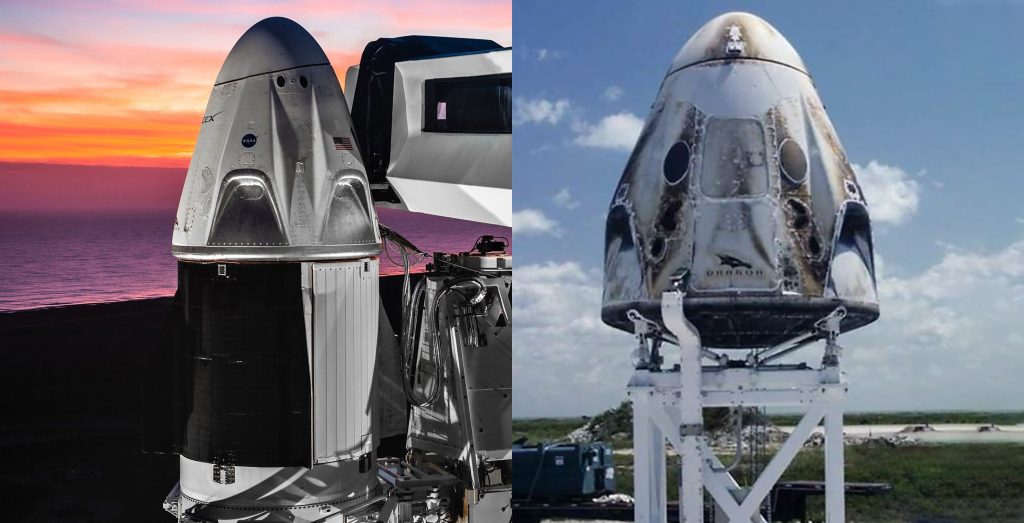
As a result of the loss of C201, the in-flight abort test must now use the Crew Dragon capsule (C205) originally intended for the Demo-2 to transport Behnken and Hurley to the ISS. The findings from the anomaly investigation identified changes to the SuperDraco thruster abort system that would need to be made to all capsules currently in production prior to any future flights. SpaceX states that “thorough testing and analysis of these mitigations has already begun in close coordination with NASA, and will be completed well in advance of future flights.”
Pending SpaceX’s modification of Dragon 2 hardware and NASA’s approval, a new launch date for the in-flight abort test could be announced as early as August. According to SpaceX CEO, Elon Musk, Falcon 9 Block 5 booster B1048.3 – the second booster to successfully complete three launches and landings – will likely support Crew Dragon’s in-flight abort test, although there have been indications from NASASpaceflight.com that B1046.3 is also a candidate.
Step by step
Following a successful in-flight abort test and recovery of the Crew Dragon capsule, a joint flight readiness review will be conducted by SpaceX, NASA’s Human Exploration and Operations Directorate (HEOD), the Commercial Crew Program (CCP), and the International Space Station Program to settle on a launch date for Demo-2. This meeting will ensure that all parties are well-versed in the procedures required to support crewed spaceflight missions from US soil after an almost decade-long hiatus.
Another anticipated safety procedure that is assumed to be tested prior to the designation of a crewed flight date is a full rehearsal of emergency escape procedures at Launch Complex 39A (LC-39A), located at Kennedy Space Center, Florida. A joint version of this test was recently completed by NASA, Boeing, and United Launch Alliance in anticipation of crewed flights launching from Space Launch Complex 41 on Cape Canaveral Air Force Station in Florida. As an escape system has not been necessary at LC-39A since the retirement of the Shuttle program, SpaceX and NASA may participate in a similar demonstration utilizing a recently installed zip-line egress system on the Fixed Service Structure of LC-39A.
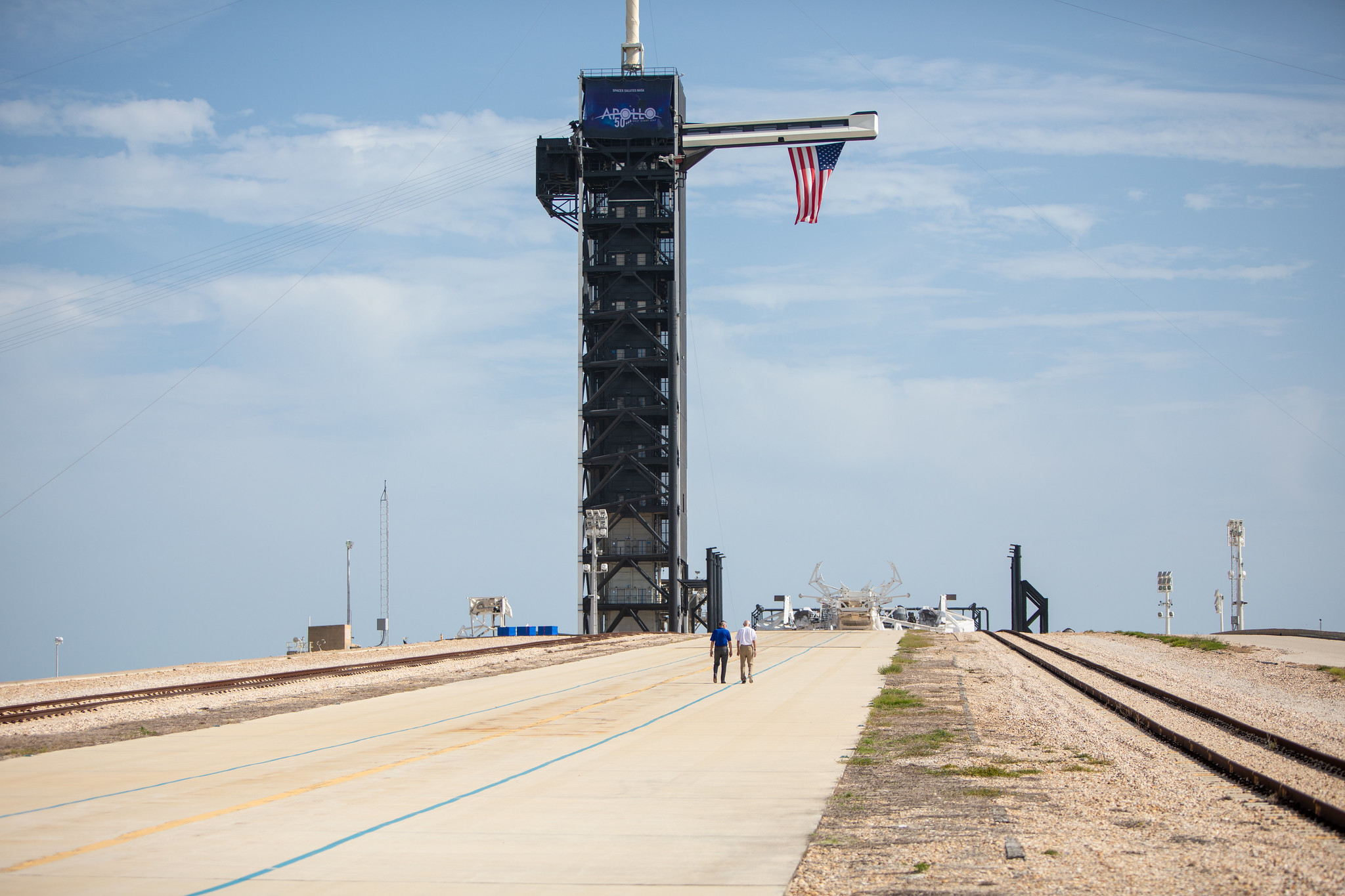
Although there is some time remaining in the year for SpaceX and NASA to meet all pre-flight objectives, it seems more likely that a crewed SpaceX demonstration mission to the ISS will occur sometime in 2020. As NASA said “we are testing, learning and incorporating changes to improve the design and operation of these next-generation human space transportation systems. As a result, our providers have improved the safety of these systems, and the effect of these changes have impacted schedules.”
Finally, according to recent reports from a handful of Russian media outlets, Crew Dragon’s inaugural crewed launch is believed to be scheduled for absolutely no earlier than (NET) mid-December 2019, although all signs point to that date being purely for planning purposes. In short, Crew Dragon’s Demo-2 mission is all but guaranteed to slip into 2020, but those delays will (hopefully) result in a significantly safer and more reliable spacecraft.
Check out Teslarati’s Marketplace! We offer Tesla accessories, including for the Tesla Cybertruck and Tesla Model 3.

News
SpaceX shades airline for seeking contract with Amazon’s Starlink rival

SpaceX employees, including its CEO Elon Musk, shaded American Airlines on social media this past weekend due to the company’s reported talks with Amazon’s Starlink rival, Leo.
Starlink has been adopted by several airlines, including United Airlines, Qatar Airways, Hawaiian Airlines, WestJet, Air France, airBaltic, and others. It has gained notoriety as an extremely solid, dependable, and reliable option for airline travel, as traditional options frequently cause users to lose connection to the internet.
Many airlines have made the switch, while others continue to mull the options available to them. American Airlines is one of them.
A report from Bloomberg indicates the airline is thinking of going with a Starlink rival owned by Amazon, called Leo. It was previously referred to as Project Kuiper.
American CEO Robert Isom said (via Bloomberg):
“While there’s Starlink, there are other low-Earth-orbit satellite opportunities that we can look at. We’re making sure that American is going to have what our customers need.”
Isom also said American has been in touch with Amazon about installing Leo on its aircraft, but he would not reveal the status of any discussions with the company.
The report caught the attention of Michael Nicolls, the Vice President of Starlink Engineering at SpaceX, who said:
“Only fly on airlines with good connectivity… and only one source of good connectivity at the moment…”
CEO Elon Musk replied to Nicolls by stating that American Airlines risks losing “a lot of customers if their connectivity solution fails.”
American Airlines will lose a lot of customers if their connectivity solution fails
— Elon Musk (@elonmusk) December 14, 2025
There are over 8,000 Starlink satellites in orbit currently, offering internet coverage in over 150 countries and territories globally. SpaceX expands its array of satellites nearly every week with launches from California and Florida, aiming to offer internet access to everyone across the globe.
Currently, the company is focusing on expanding into new markets, such as Africa and Asia.
News
Tesla hints at Starlink integration with recent patent
“By employing polymer blends, some examples enable RF transmission from all the modules to satellites and other communication devices both inside and outside the vehicle.”

Tesla hinted at a potential Starlink internet terminal integration within its vehicles in a recent patent, which describes a vehicle roof assembly with integrated radio frequency (RF) transparency.
The patent, which is Pub. No U.S. 2025/0368267 describes a new vehicle roof that is made of RF-transparent polymer materials, allowing and “facilitating clear communication with external devices and satellites.”
Tesla believes that a new vehicle roof design, comprised of different materials than the standard metallic or glass elements used in cars today, would allow the company to integrate modern vehicular technologies, “particularly those requiring radio frequency transmission and reception.
Tesla has recently filed a US patent application on integrating RF transparent materials into the roof structure.
“facilitating clear communication with external devices and satellites”
Tesla fleet is getting @Starlink connectivity integration soon. LFG @Tesla @elonmusk… pic.twitter.com/bLa8YtPLd1
— Chansoo Byeon (@Chansoo) December 9, 2025
Instead of glass or metallic materials, Tesla says vehicles may benefit from high-strength polymer blends, such as Polycarbonate, Acrylonitrile Butadiene Styrene, or Acrylonitrile Styrene Acrylate.
These materials still provide ideal strength metrics for crashworthiness, stiffness for noise, vibration, and harshness control, and are compliant with head impact regulations.
They would also enable better performance with modern technologies, like internet terminals, which need an uninterrupted signal to satellites for maximum reception. Tesla writes in the patent:
“By employing polymer blends, some examples enable RF transmission from all the modules to satellites and other communication devices both inside and outside the vehicle.”

One of the challenges Tesla seems to be aware of with this type of roof design is the fact that it will still have to enable safety and keep that at the forefront of the design. As you can see in the illustration above, Tesla plans to use four layers to increase safety and rigidity, while also combating noise and vibration.
It notes in the patent that disclosed examples still meet the safety requirements outlined in the Federal Motor Vehicle Safety Standards (FMVSS).
Starlink integrated directly into Tesla vehicles would be a considerable advantage for owners. It would come with a handful of distinct advantages.
Initially, the inclusion of Starlink would completely eliminate cellular dead zones, something that is an issue, especially in rural areas. Starlink would provide connectivity in these remote regions and would ensure uninterrupted service during road trips and off-grid adventures.
It could also be a critical addition for Robotaxi, as it is crucial to have solid and reliable connectivity for remote monitoring and fleet management.
Starlink’s growing constellation, thanks to SpaceX’s routine and frequent launch schedule, will provide secure, stable, and reliable internet connectivity for Tesla vehicles.
Although many owners have already mounted Starlink Mini dishes under their glass roofs for a similar experience, it may be integrated directly into Teslas in the coming years, either as an upgrade or a standard feature.
Investor's Corner
SpaceX IPO is coming, CEO Elon Musk confirms
However, it appears Musk is ready for SpaceX to go public, as Ars Technica Senior Space Editor Eric Berger wrote an op-ed that indicated he thought SpaceX would go public soon. Musk replied, basically confirming it.

Elon Musk confirmed through a post on X that a SpaceX initial public offering (IPO) is on the way after hinting at it several times earlier this year.
It also comes one day after Bloomberg reported that SpaceX was aiming for a valuation of $1.5 trillion, adding that it wanted to raise $30 billion.
Musk has been transparent for most of the year that he wanted to try to figure out a way to get Tesla shareholders to invest in SpaceX, giving them access to the stock.
He has also recognized the issues of having a public stock, like litigation exposure, quarterly reporting pressures, and other inconveniences.
However, it appears Musk is ready for SpaceX to go public, as Ars Technica Senior Space Editor Eric Berger wrote an op-ed that indicated he thought SpaceX would go public soon.
Musk replied, basically confirming it:
As usual, Eric is accurate
— Elon Musk (@elonmusk) December 10, 2025
Berger believes the IPO would help support the need for $30 billion or more in capital needed to fund AI integration projects, such as space-based data centers and lunar satellite factories. Musk confirmed recently that SpaceX “will be doing” data centers in orbit.
AI appears to be a “key part” of SpaceX getting to Musk, Berger also wrote. When writing about whether or not Optimus is a viable project and product for the company, he says that none of that matters. Musk thinks it is, and that’s all that matters.
It seems like Musk has certainly mulled something this big for a very long time, and the idea of taking SpaceX public is not just likely; it is necessary for the company to get to Mars.
The details of when SpaceX will finally hit that public status are not known. Many of the reports that came out over the past few days indicate it would happen in 2026, so sooner rather than later.
But there are a lot of things on Musk’s plate early next year, especially with Cybercab production, the potential launch of Unsupervised Full Self-Driving, and the Roadster unveiling, all planned for Q1.








